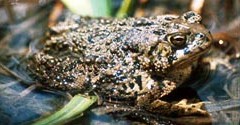The Most-Traveled Cane Toad
Anuran impact and trivia:
"Things" answered (and bookmarked) on this page:
Anuran contribution to human life.
-Herpetology is the study of reptiles and
amphibians. In reality, there is little
evolutionary relationship between reptiles and amphibians.
Reptiles have amniotic eggs, and amphibians do not have
amniotic eggs. This is a big difference.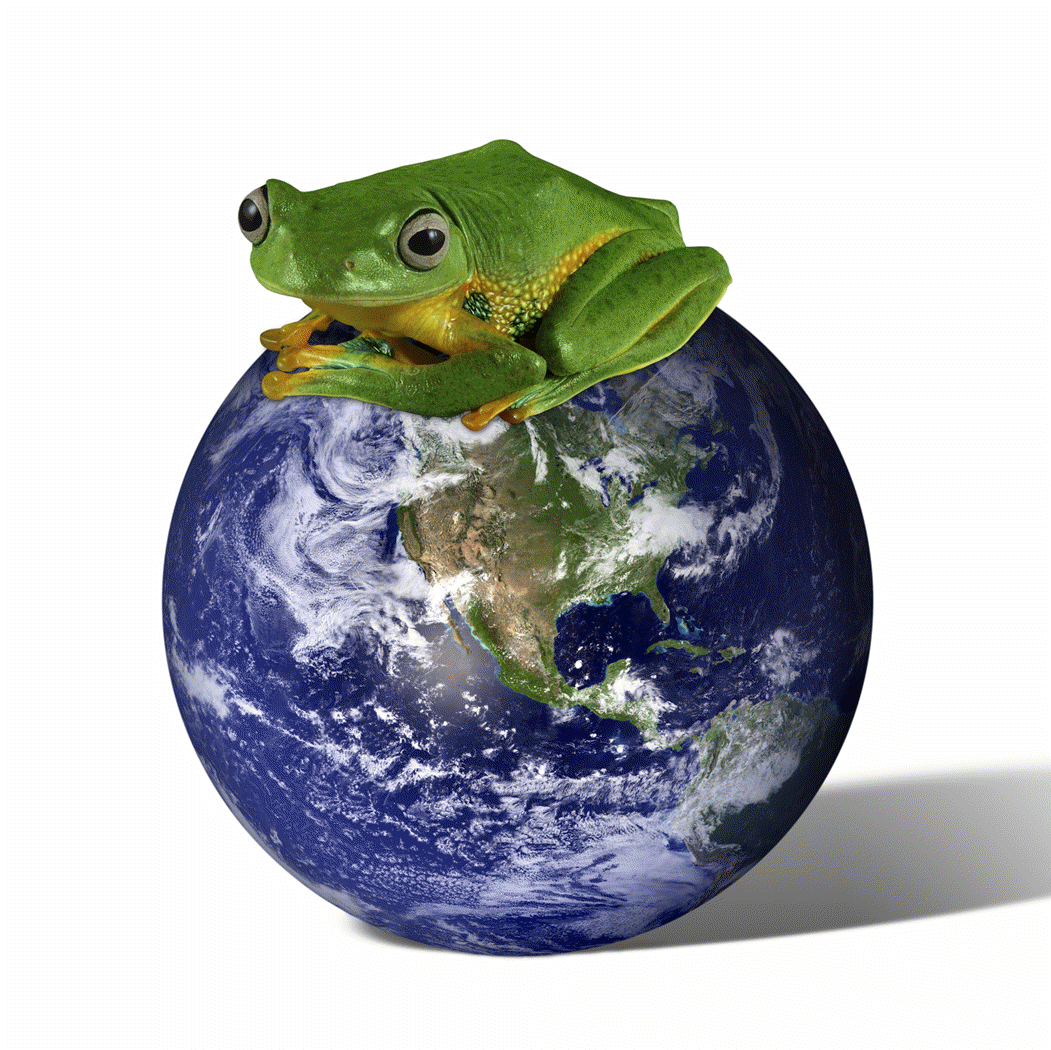
- Amphibians are often represent the highest percentage of vertebrate biomass in an ecosystem.
-All toads are technically frogs. However, “toad” usually implies more saggy skin, eggs laid in strings, fast developing tadpoles, and adults having only 4 toes.
-Frogs are concentrated in Central and
South America, and relatively few exist in
-Bullfrogs were sent into space in the 1970s.
 -Humans use the cane toad genus in causal
language. Ever heard the term “buffoon”?
-Humans use the cane toad genus in causal
language. Ever heard the term “buffoon”?
-In 19th century
-There aren’t many amphibian fossils because amphibians have light weight bones and live in flowing waters; neither condition is conducive to fossilization.
 -90% of known amphibians are frogs and
toads.
-90% of known amphibians are frogs and
toads.
-Anurans breathe through gills, lungs, skin, and through mouth surfaces.
-Unlike other orders of amphibians (Urodela/Caudata and Gynophiona/Apoda), in anurans external fertilization of eggs is the norm. 10% of anurans care for their young. Amphibians are the only vertebrates whose larvae do not depend on adult care.
-Males and females are often visually distinguishable, at least during breeding season. Males often have dark-colored throats, as displayed by this gray treefrog (Hyla versicolor).
-Sometimes frogs drink orally; they will open their mouths towards water streams and "eat" such water as if it were prey.
-Through their skin, frogs can change pigmentation to reflect more or less sunlight (and thus passively control their body temperatures) and regulate water release to prevent overheating (essentially choosing to sweat by altering skin permeability).
-Frogs control their body temperatures by altering their level of physical activity, altering the pigmentation of their skin, choosing to release water through the skin, basking or seeking shelter, and metabolically by burning fat. When infected, frogs elevate their body temperatures.
-During mating, the female signals to the male that she is releasing eggs (and hence he should release sperm) by the arch of her back and the position of her cloaca. In response, he moves his cloaca closer to hers, and males of some species will use their hindlegs to gather the eggs.
-In most species, both
male and female frogs are capable of
giving a “release call” – asking to be released from amplexus.
They also use body vibrations to warn off or get rid of
unwanted mates. However, only some female anurans make use of
release signals. The reason for this
difference between species remains unclear.
Few males listen anyway, so why has the release signal evolved?
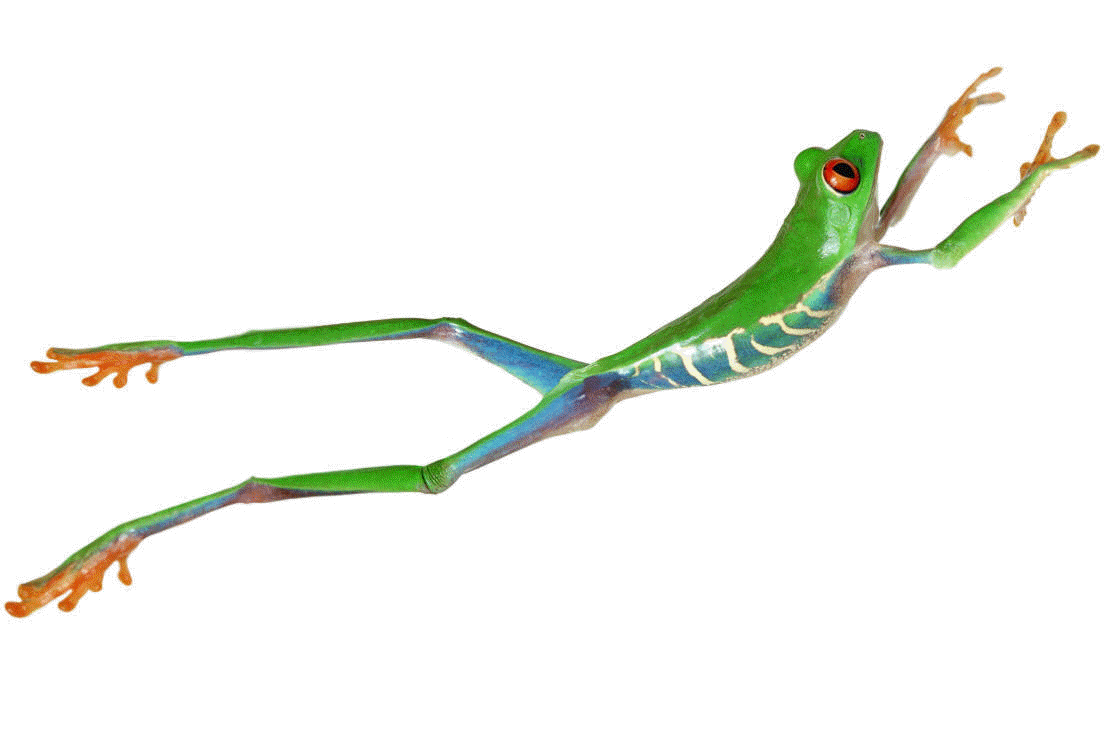
-Anurans' gelatinous eggs protect against dessication, minimize predation and pathogenic infection, ultraviolet radiation, and chemical agent damage. Egg diameter is dependent upon the size of the female and her nutrition. These factors can influence the timeing of tadpole development and survival. Pigment in the eggs protects moderates temperature and UV exposure.
-Tadpoles
may live in a
dense group. This
raise
temperature and the
rate of maturation, provides
a joint chemical defense against
predation, and
hinders
predation by confusing a predator
who tries to
single out a victim.
-Endocrine hormones regulate metamorphosis.
-Frogs breed only after metamorphosis-- not true of salamanders.
-Unlike the human tongue, the frog tongue attaches in the front of the mouth. One Anuran lacks a tongue completely!
-The largest frog is the Goliath frog (Conraua
goliath) in
-In 2001, the cane toad was one of only 3 amphibians to make it onto the “top 100” list of worst invasive species, a list generated by the conservation group IUNC.
-With
regards to exotic species (not specific to anurans), there is a
“tens rule”: 15% of exotic species will become established, and
10% of those will become pests.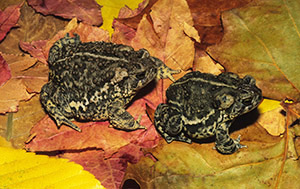
-Because frogs do not have closed ribs, they have to suck air into their mouths by lowering the floor of their mouth, then close their nostrils and raise their mouth floor to force air into their lungs.
-When injured, Bufo tadpoles release
an odor that causes other Bufo tadpoles to retreat.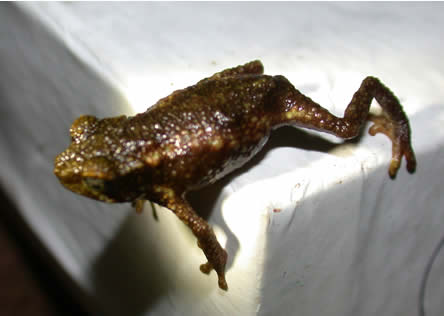
-The smallest true toad (Oreophrynella) is all of 0.75 inches, or 2 cm. The honor of largest true toad depends upon the source, but is either the cane toad (Bufo marinus) or Bufo blombgergi, which can be 9.8 inches (25 cm).
Copyright Valerie C. Clark
 -The Mayans thought that toads here on
earth sing to toads in heaven, and that the toads in heaven then
send rain.
-The Mayans thought that toads here on
earth sing to toads in heaven, and that the toads in heaven then
send rain.
-Indigenous people in
-In
-There is an Indonesian legend of a frog who thought so much that he could fly that he finally did; this sounds similar to the American little train story for kids (“I think I can, I think I can”), but may be based on the Indonesian gliding tree frogs.
-The Aztecs thought that a toad symbolized
a ceaseless death.
-During the middle ages, Europeans thought that toads and anything they touched were contaminated with poisons, and that toads were friends of witches.
-Gypsies believed that toads could protect them from plagues, brought good fortune or marriage, brought on the rains, and were the spirits of the unborn and prematurely dead. Hence, toads were somewhat of a resurrection symbol.
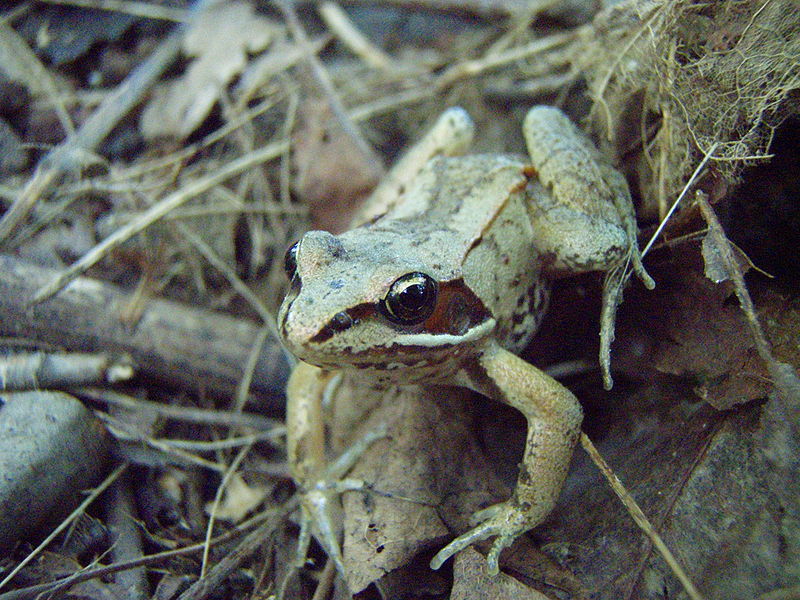 -The northern most frog, Rana temporaria,
occurs at 71 N longitude. In
-The northern most frog, Rana temporaria,
occurs at 71 N longitude. In
-The Chinese made a topical ointment from
dried toad skins, but in the 1990s people ate it and died.
This is a problem to similar to that in

-Sumerians used 9 frogs to symbolize the 9 months of pregnancy.
-Ancient Egyptians placed frogs on
the bellies of pregnant women – for fetal safety.
-The fable of “kiss a toad and turn him into a prince”—'nough said.
-In Homer’s “The battle of frogs and
mice”, frog sounds keep a traveling goddess awake. In her
rage, she turns against frogs.
-In the Bible, both the frog plague with Moses or Revelations 16:13: “And I saw there unclean spirits like toads…”
-The word “tadpole” comes from the
medieval English for “toad head”.
How anurans have contributed to life as humans know it.
-Frogs have been used to time geological and climatic changes.

-Frogs live over a wide range of temperatures, and as such their skin is viable over a wide range of temperatures. Scientists use frogs for tissue preps in laboratory experiments because preparations from frogs can have longer prep lives. This simplifies research and its costs.
-Frogs (including cane toads) were among the first pregnancy tests: urine was injected into the frog. If the urine was from a pregnant woman, the hormones in the urine would induce a frog to lay eggs.
-Frogs are used to teach anatomy and dissection in many schools and colleges.
-Stem cell research in frogs carries no ethical issues.
-Frogs were the first animal to be cloned.
-Frogs are carriers for tuberculosis but do not get sick with TB; as such, they are being studied on TB resistance.

-In
-Tadpoles help to keep aquatic life in check, thus preventing overgrowth and crash cycles.
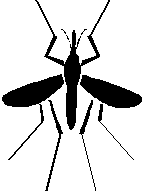
 -Frogs eat insects and thus decrease pests,
disease, and human expense both on pesticides and medical costs
related to insect-borne diseases. For example, they eat
mosquitoes, which can carrier the causative agent of
malaria.
-Frogs eat insects and thus decrease pests,
disease, and human expense both on pesticides and medical costs
related to insect-borne diseases. For example, they eat
mosquitoes, which can carrier the causative agent of
malaria.
-Frog skin is moist and sometimes mucus-coated. This is a perfect environment for bacteria, but frog skin contains a peptide called magainin, which is anti-bacterial for both gram positive and negative bacteria. Frog skin and its components are being studied as a potential source for antibiotics.
-Frogs (but not cane toads) are a major
food source for humans in many parts of he world.

-Frogs are bioindicators of environmental health (for an explanation, see section on why amphibians are declining).
-There is discussion as to whether vehicles
in
Next, let's learn about cane toad (and other Anuran) populations.
